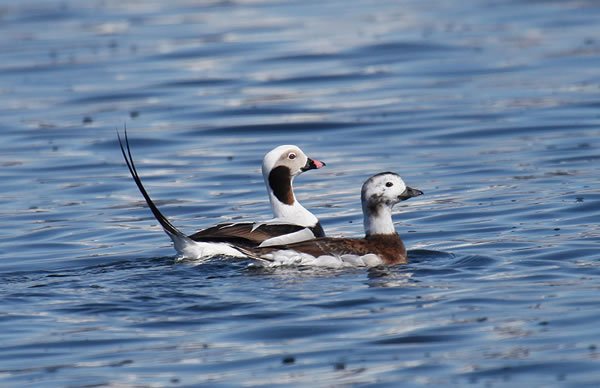Evaluating stable hydrogen isotopes for identifying breeding areas of harvested sea ducks

Project Number: 158
Year Funded: 2021
Lead Institution(s): University of Maryland, University of Florida, USGS
Project Lead: David Nelson
Collaborator(s): Hannah Vander Zanden, Todd Katzner
Location: Atlantic, Mississippi, and Pacific Flyways
Focal Species: Long-tailed Duck (Clangula hyemalis), Surf Scoter (Melanitta perspicillata)
Project Description: This project represents a pilot study aimed at assessing the ability of feather stable hydrogen isotope (δ2H) data to delineate the most probable breeding locations of juvenile long-tailed ducks and surf scoters harvested in North America. To accomplish our objectives, SDJV provided us with feathers from 120 harvested individuals in the SDJV’s feather archive (n= 60 juvenile long-tailed ducks and n = 60 juvenile surf scoters) spread across the Atlantic, Mississippi, and Pacific flyways. For 90% (n=108) of these individuals we performed δ2H analysis on a single feather, whereas for 10% of them (n=12) we assessed intra-feather and intra-individual variation in isotope values by measuring subsamples from the proximal, middle and distal ends of 3 feathers per individual. Following an initial evaluation of the δ2H data that we obtained from these feathers (see Results below), we suspected that some individuals may have been provisioned with marine resources that would make them unsuitable for geolocation purposes using δ2H data. Therefore, to identify such individuals we performed carbon and nitrogen isotope (δ13C and δ15N) analyses of the same feather samples. Results of the pilot study identified that feather samples of several surf scoters and long-tailed ducks showed potential marine influence in their diet prior to fledging. However, this is contrary to the current understanding that these species (especially surf scoters) typically rear their young in freshwater/terrestrial environments. The SDJV Continental Technical Team then requested that we then conduct additional analysis of feathers from live-captured birds of known age (provided by SDJV) to investigate whether previously sampled birds were misidentified as hatch year birds.
Project Reports:
